Traditionally, Japanese chairs do not look anything like western chairs. Instead of four tall legs that propel the seater off the floor, Japanese chairs sit flush against the ground and look much more simple.
However, you shouldn’t let that simplicity fool you. Sitting on a Japanese chair, specifically a Zaisu, is a great way to change up your seating habits and explore the benefits of sitting on the floor with a different kind of ergonomic support.
Let’s go over what a Zaisu is, the benefits of sitting in one, and how to sit in seiza, a chair-free position developed by the Japanese.
Table of Contents
What is a Zaisu?
Not all Japanese chairs are zaisus. A zaisu is a specific style of Japanese chair that looks like a normal four-legged chair without any legs. The bag can be curved for optimal support sometimes and it can even feature an arm rest.
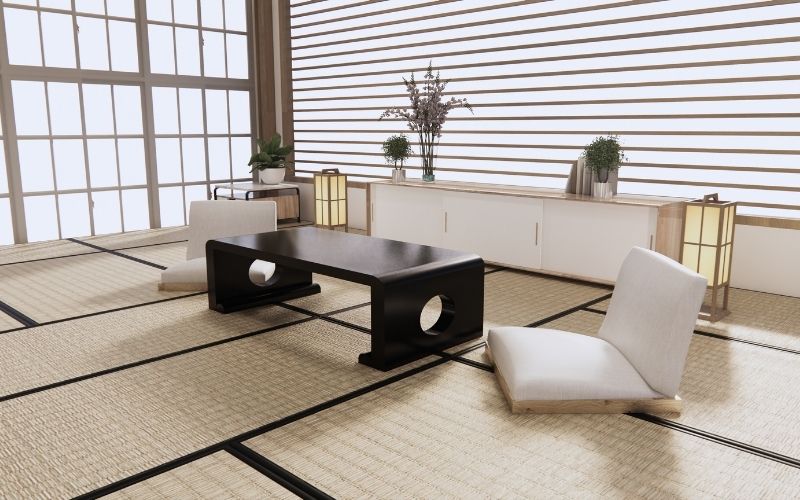
In Japanese culture, it is tradition to eat on the floor laid with tatami mats. Zaisu chairs are often used to sit at these tables, which can also be heated.
Zaisu doesn’t just look one way. That’s the beauty of them. Like a regular chair, there are different cushion options, a variety of back shapes, and an optional armrest. These chairs are meant to relax during and after a delicious meal.
Most people will probably find a traditional western arm chair more comfortable than a zaisu, but that’s alright–they aren’t meant to provide the same seating experience. The quality of zaisu chairs is impressively high.

They can be made of metal or wood. The simplicity of their design highlights the quality of the materials, so going for a more expensive zaisu is probably well worth it. Because zaisus are used on low tables, they can fold over for convenient storage. Simply bend the back of the chair over the seat and slide it under the table until your next meal.
While there is a cushion on the chair, it may not be enough for adults who require a lot of support or who are used to sitting on a couch. You may want to add an extra cushion to the seat of the chair if this is a concern for you.
A zaisu can also be used for meditation. It provides extra support you don’t get when just sitting on the floor and can make a meditation space look more aesthetically pleasing.
Benefits of Sitting in a Zaisu

There are a number of benefits of using a zaisu. Since a zaisu is on the floor, you get to enjoy the emotional and physical benefits of sitting on the ground.
You don’t need to have very good balance to sit in a chair. You barely have to bend your knees to take a seat and your feet are firmly planted on the ground the entire time.
Sitting on a zaisu (or just sitting on the ground in general) gives you the opportunity to engage your core and slowly lower yourself into the seated position. Once you’ve established yourself in the zaisu, you have several ways you can bend your legs, giving you more ways to make your seating experience pleasant and ergonomically beneficial.
Sitting in a traditional chair for too long can put pressure on your hips, which is especially unpleasant for older individuals. When you sit cross-legged in a zaisu, you open up your hips and give your legs a nice stretch they’ve probably needed all day.

The chair can also help with flexibility since it requires you to get up and down from the floor to use it. Staying moving, even in little ways, is essential to living a long, healthy, and strong life, and a zaisu is a great way to incorporate some gentle movement into your routine.
It’s difficult to feel grounded sometimes. From all the technology we immerse ourselves in, to the general hub-bub of the modern world. Sometimes, the best way to feel grounded is to literally sit on the ground.
A zaisu allows you to enjoy sitting on the floor without fully committing to pressing your sit bones against the carpet, tile, or tatami in your space. Whether you’re enjoying a meal or sitting down for a few minutes of meditation, the act of getting down onto the floor is a humbling one that allows you to reconnect with your surroundings.
Aesthetically, a zaisu is also very beneficial. It’s simplicity, dedication to high quality materials, and small frame all add to it’s appeal.
Zaisus are popular in Japan because they are great for tiny apartments where space is at a premium. They provide a decent amount of comfort without taking up much space since they can fold away and have optional arm rests.
The chairs also almost always come in neutral colors. This means they are soothing to look at and add a meditative element to any room. This is one reason why you might find zaisus in a meditation space.
How Do You Sit in Seiza?
If you don’t have a zaisu but still want to explore Japanese sitting, sitting in seiza is a good first step. Seiza, also known as knee sitting, is relatively simple and exceedingly popular in Japan.
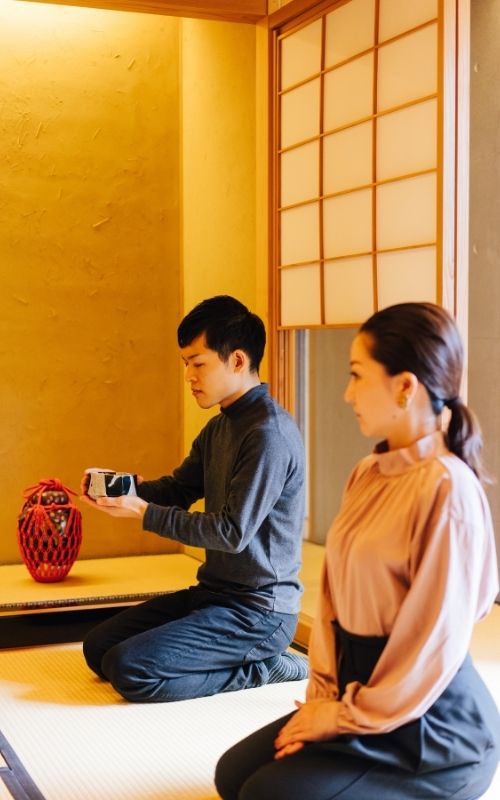
In Japanese, seiza translates to “sitting with a correct posture”. To sit in seiza, get on your knees and bring your hips back to sit on your heels. The legs should be straight and neatly folded and your spine should be straight.
In seiza, the feet must be tucked under the body with the toenails pressed against the floor. While you can certainly feel relaxed sitting in seiza, your body must be aligned and erect. Otherwise, you risk fatiguing your legs, feet, or wanting to change positions after a few moments.
You should not be wearing any footwear when in seiza. Your hands should be gently folded in your lap.
While you sit on the floor during seiza, using a flat cushion, also known as a zabuton, is required.
The seiza sitting position represents courtesy and apology in Japan, but it is often used for mediation as well.
How Long Can You Sit in Seiza?
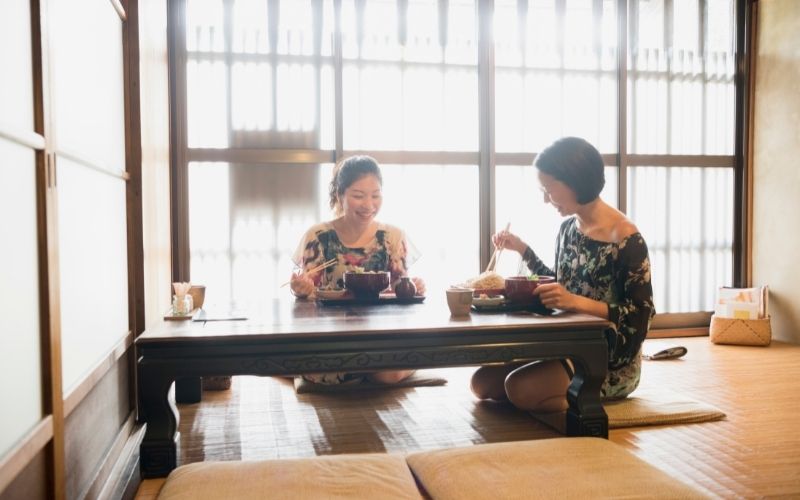
If you’re a beginner, you may feel comfortable in the position for a minute or so. Like any meditation pose, practice makes perfect.
Experienced seiza sitters can last a little longer in the position. Usually forty minutes is the average. That may not seem like very long, but when you realise how meticulous sitting in seiza can be, you begin to appreciate it more.
Seiza Sitting Style Benefits
There are several benefits to sitting in seiza.
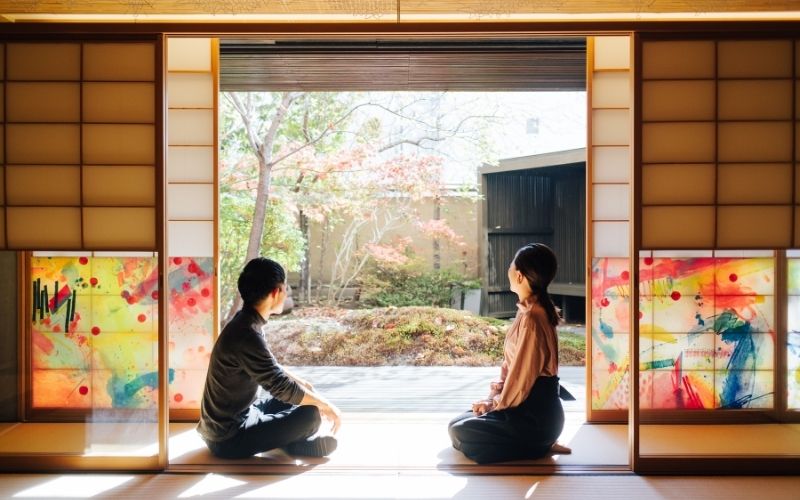
Because it requires ample knee and ankle movement, it opens up the joints and helps keep them flexible and strong. When sitting in a regular chair, you don’t really get to bend your knees and ankles, so sitting in seiza is a nice change.
Seiza requires a straight back and aligned limbs. To obtain this, the core should be engaged. Having a strong and engaged core offers several physical benefits, so this is ideal.
Since the back and abdominal muscles are engaged, seiza can help relieve back pain.
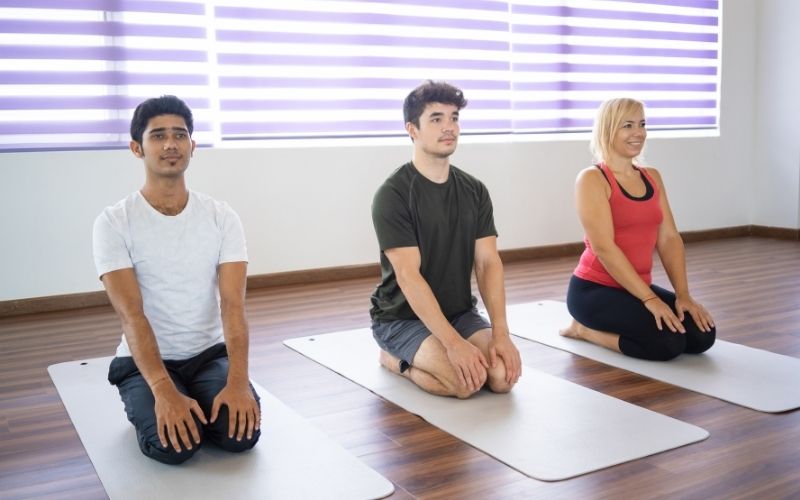
Proper posture is essential for a healthy back and it’s very difficult to maintain correct posture without an engaged core. This doesn’t mean sitting in seiza is going to replace visiting your physician, but it will cause significantly less back problems then slouching in an office chair or on a sofa might.
Finally, sitting straight encourages proper blood circulation. If you feel like you aren’t getting enough circulation in your feet because you’re sitting on them, rolling up a small towel and placing it under your toes might help relieve that sensation.
Recommended Products
Wooden Zaisu Chair

This zaisu chair is simple but provides the support you need when sitting on the floor. It comes in multiple colors and is relatively affordable so you can test it out without feeling like you’ve made a giant investment.
If you’re looking for optimal comfort, this zaisu chair is completely padded. It’s fully foldable, as comfortable as a sofa, and works well for children and adults alike. You can use it as a chair or pull the back down and lay on it.
Meditation Bench Cushion for Kneeling Seiza 
This cushion is specifically designed for seiza sitting and comes in a variety of colors and patterns. It features a removable slipcover so that you can have it cleaned and is the perfect size for kneeling.
Monk & Llama Kneeling Meditation Bench with Foldable Legs & Cushion 
If you need help sitting in seiza, getting a meditation bench might be for you.
This small wooden seat helps you kneel without putting any pressure on your ankles and feel. It comes with a cushion for added comfort.
There’s no shame in needing a little help with seiza, don’t definitely get this if you need the extra support!
In Conclusion
Sitting on a zaisu or in seiza are great ways to feel grounded, improve your circulation, and stretch out your legs and hips. While sitting in both manners may not be super comfortable at first, they both have important histories and impressive benefits.
You may want to try out both as alternatives to sitting cross-legged when meditating.
We’d love to hear your experiences with both seating methods and which one you prefer!

My name is Vance, and I am the owner of To Ergonomics. Our mission is to improve your workflow by helping you create a supportive and welcoming environment. We hope that you’ll find what you’re looking for while you’re here.





